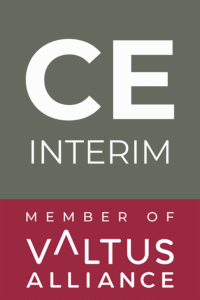Nicht genug Zeit, um den ganzen Artikel zu lesen? Hören Sie sich die Zusammenfassung in 2 Minuten an.
Verlagerung der Fabrik ist ein gewaltiges Unterfangen, das mit zahlreichen Aufgaben und Anforderungen verbunden ist. Mit dem richtigen Plan können Unternehmen den Prozess vereinfachen und eine erfolgreiche Betriebsverlagerung sicherstellen.
Oft fehlt es den Unternehmen an diesen Ressourcen, was zu einer mangelhaften Planung und Ausführung führt, die schwerwiegende Folgen haben kann. Wenn Sie das Wachstum und die Rentabilität Ihres Unternehmens aufrechterhalten wollen, ist es wichtig zu wissen, wie Sie eine Betriebsverlagerung effektiv planen.
Hier finden Sie einen 11-stufigen Leitfaden, der Ihnen helfen soll, einen nahtlosen Übergang mit Hilfe von Interim-Managern und Führungskräften zu erreichen.
Schritt 1: Erstbewertung und Planung
In einem ersten Schritt ist zu prüfen, ob die Verlagerung Ihres Werks in eine andere Region oder in Ihr Heimatland sinnvoll ist.
Berücksichtigen Sie die potenziellen Vorteile, Herausforderungen und den Gesamtwert des Umzugs. Wenn Sie sich entschieden haben, gehen Sie zur Strategiephase über:
- Zielsetzungen definieren: Setzen Sie klare Ziele, Zeitvorgaben und Meilensteine.
- Finanzielle Anforderungen: Berechnung der Kosten und ihrer Auswirkungen.
- Standortbewertung: Bewertung potenzieller Standorte.
- Risikomanagement: Durchführung von Risikobewertungen und Umsetzung einer Risikomanagementstrategie.
- Engagement der Interessengruppen: Ermittlung und Einbeziehung aller wichtigen Interessengruppen, einschließlich Mitarbeitern, Lieferanten und Kunden, um Transparenz und Unterstützung zu gewährleisten.
- Einhaltung von Vorschriften: Untersuchen Sie die relevanten Gesetze, Vorschriften und Industriestandards am neuen Standort und halten Sie sie ein.
- Ressourcenzuweisung: Zuweisung von Ressourcen für die Planung, Budgetierung und Durchführung des Umzugs, einschließlich Personal, Ausrüstung und Technologie.
- Kommunikationsplan: Entwickeln Sie einen umfassenden Kommunikationsplan, um alle Beteiligten während des gesamten Umzugsprozesses auf dem Laufenden zu halten.
Schritt 2: Entwickeln Sie einen detaillierten Plan und bilden Sie ein Team
Erstellen Sie nach der ersten Planung einen umfassenden Plan, in dem alle Aufgaben und Ergebnisse aufgeführt sind. Erstellen Sie einen transparenten Kommunikationsplan, um alle Beteiligten auf dem Laufenden zu halten.
- Ein Team zusammenstellen: Auswahl der Projektleiter und der wichtigsten Teammitglieder.
- Rollen zuweisen: Zuweisung von Zuständigkeiten und Nutzung des Fachwissens von Interim-Managern zur Abwicklung des Umzugsprojekts.
- Zeitplan entwickeln: Erstellen Sie einen detaillierten Zeitplan, der die einzelnen Phasen des Umzugs aufschlüsselt.
- Ressourcenzuweisung: Bestimmen und Zuweisen von Ressourcen, einschließlich Personal, Ausrüstung und Budget.
- Kommunikationsstrategie: Erstellen Sie einen soliden internen und externen Kommunikationsplan, um die Beteiligten auf dem Laufenden zu halten.
- Planung für Notfälle: Entwickeln Sie Notfallpläne für mögliche Störungen oder Verzögerungen.
- Dokumentation: Führen Sie eine gründliche Dokumentation aller Aspekte des Umzugsprozesses, um die Verantwortlichkeit zu gewährleisten und künftige Prüfungen zu erleichtern.
Schritt 3: Festlegen eines Budgets und Prüfung der Finanzierungsmöglichkeiten
Erstellen Sie ein detailliertes Budget, das Kosten wie den Erwerb neuer Einrichtungen, den Umzug von Geräten, die Einrichtung des neuen Standorts sowie die Einstellung und Schulung von Mitarbeitern umfasst.
- Versteckte Kosten: Bedenken Sie Ausfallzeiten, den Mangel an qualifizierten Arbeitskräften und die Unzufriedenheit von Mitarbeitern und Kunden.
- Fonds für unvorhergesehene Ausgaben: Legen Sie einen separaten Fonds für unerwartete Ausgaben an.
- Finanzielle Optionen: Erkundung von Investitionen, Darlehen, staatlichen Anreizen und Zuschüssen am neuen Standort.
- Kosten-Nutzen-Analyse: Führen Sie eine detaillierte Kosten-Nutzen-Analyse durch, um sicherzustellen, dass die Vorteile der Verlagerung die Kosten überwiegen.
- Überlegungen zur Versicherung: Überprüfen Sie die aktuellen Versicherungspolicen und nehmen Sie die notwendigen Anpassungen vor, um die neue Einrichtung und andere umzugsbedingte Risiken abzudecken.
- Genehmigungen und rechtliche Aspekte: Sicherstellung der Einhaltung der örtlichen, staatlichen und bundesstaatlichen Vorschriften am neuen Standort, einschließlich der Einholung der erforderlichen Genehmigungen und Lizenzen.
- Steuerliche Implikationen: Bewertung der steuerlichen Auswirkungen einer Verlagerung der Fabrik, einschließlich möglicher Vorteile oder Verbindlichkeiten.
- Lieferantenbeziehungen: Aufbau enger Beziehungen zu lokalen Anbietern und Dienstleistern, um die Unterstützung während des gesamten Umzugsprozesses sicherzustellen.
- Ausbildungsprogramme: Entwicklung von Schulungsprogrammen für neue und bestehende Mitarbeiter, um einen reibungslosen Übergang am neuen Standort zu gewährleisten.
- Technologie und IT-Infrastruktur: Sicherstellen, dass die IT-Infrastruktur und die technischen Systeme angemessen geplant sind und den Betrieb am neuen Standort unterstützen können.
Schritt 4: Auswahl des Umzugsortes und Vorbereitung des Umzugs
Die Auswahl des richtigen Standorts ist entscheidend für den Erfolg einer Betriebsverlagerung. Führen Sie eine gründliche Analyse potenzieller Standorte durch und entscheiden Sie, welcher am besten zu Ihren unmittelbaren und langfristigen Zielen passt.
- Auswahl des Standorts: Nutzen Sie das Fachwissen von Interim-Managern, um Fehlentscheidungen zu vermeiden.
- Vorbereitung auf den Übergang: Prüfung des Maschinenparks, Durchführung notwendiger Renovierungsarbeiten, Einholung von Genehmigungen und Lizenzen.
- Logistik-Koordination: Organisation des Transports von Ausrüstung, Maschinen und Inventar. Dazu kann die Zusammenarbeit mit Logistikunternehmen gehören, um einen sicheren und effizienten Transport zu gewährleisten.
- Unterstützung bei der Umsiedlung von Mitarbeitern: Unterstützung von Mitarbeitern, die an den neuen Standort umziehen werden, einschließlich Unterstützung bei der Unterbringung, Reisevorbereitungen und Eingewöhnung.
- Gemeinschaftliches Engagement: Engagieren Sie sich mit der lokalen Gemeinschaft am neuen Standort, um Beziehungen aufzubauen und eine reibungslose Integration in das Gebiet zu gewährleisten.
- Operative Kontinuität: Entwicklung von Strategien zur Minimierung von Ausfallzeiten während der Umstellung, damit die Produktion nahtlos weiterlaufen kann.
- Überprüfung und Anpassung nach dem Umzug: Planen Sie regelmäßige Überprüfungen nach dem Umzug, um den Erfolg des Umzugs zu bewerten und gegebenenfalls Anpassungen zur Verbesserung der Effizienz und Produktivität vorzunehmen.
Schritt 5: Befolgen Sie die örtlichen Vorschriften und stellen Sie die Einhaltung sicher
Es ist wichtig, die örtlichen Vorschriften zu kennen. Informieren Sie sich über die örtlichen Gesetze und Richtlinien und passen Sie Ihre Produktionsabläufe entsprechend an.
- Einhaltung von Vorschriften: Beantragen und erhalten Sie die erforderlichen Genehmigungen und Lizenzen, um einen ununterbrochenen Betrieb zu gewährleisten.
- Umweltvorschriften: Bewertung und Einhaltung der für den neuen Standort geltenden Umweltvorschriften, um rechtliche Probleme und Versäumnisse bei der Unternehmensverantwortung zu vermeiden.
- Gesundheits- und Sicherheitsstandards: Umsetzung und Einhaltung der lokalen Gesundheits- und Sicherheitsstandards, um ein sicheres Arbeitsumfeld für alle Mitarbeiter zu gewährleisten.
- Datenschutz und Datensicherheit: Überprüfung und Aktualisierung der Maßnahmen zum Datenschutz und zur Datensicherheit, um die lokalen Datenschutzgesetze einzuhalten und die Vertraulichkeit und Sicherheit sensibler Informationen zu gewährleisten.
- Arbeitsgesetze: Kenntnis und Einhaltung der örtlichen Arbeitsgesetze, einschließlich Arbeitsverträgen, Arbeitszeiten, Löhnen und Sozialleistungen.
- Zoll- und Handelsbestimmungen: Achten Sie bei einem Umzug ins Ausland auf die Einhaltung der Zoll- und Handelsbestimmungen, um die reibungslose Ein- und Ausfuhr von Waren zu erleichtern.
Schritt 6: Kommunikation mit Mitarbeitern und Interessenvertretern
Eine klare Kommunikation mit Mitarbeitern und Interessengruppen ist unerlässlich. Informieren Sie Ihre Mitarbeiter frühzeitig und gehen Sie auf ihre Bedenken ein. Informieren Sie Lieferanten, Kunden und lokale Behörden über Ihre Pläne.
- Kulturelles Training: Kulturelle Sensibilisierung für Mitarbeiter, die in ein Gebiet mit anderen kulturellen Gepflogenheiten umziehen, um die Integration und den Respekt am Arbeitsplatz zu fördern.
- Leistungsmetriken: Festlegung klarer Leistungskennzahlen, um den Erfolg des Umzugsprozesses zu überwachen und zu bewerten sowie verbesserungswürdige Bereiche zu ermitteln.
- Nachfolgeplanung: Entwickeln Sie einen Nachfolgeplan, um die Kontinuität der Führung während und nach dem Umzug zu gewährleisten und potenzielle Unterbrechungen durch den Wechsel von Schlüsselpersonen abzumildern.
- Strategie der Öffentlichkeitsarbeit: Entwickeln Sie eine Strategie für die Öffentlichkeitsarbeit, um die Geschichte Ihres Umzugs zu erzählen und die positiven Auswirkungen sowohl auf das Unternehmen als auch auf die neue Gemeinschaft hervorzuheben.
- Kundenkommunikation: Proaktive Kommunikation mit den Kunden über den Umzug, um ihre Erwartungen zu erfüllen und die Kundenzufriedenheit und -treue zu erhalten.
Schritt 7: Planung der Logistik und des Lieferkettenmanagements
Planen Sie den physischen Umzug mit den folgenden Aktivitäten:
- Zeitplan für den Umzug: Erstellen Sie einen detaillierten Zeitplan mit den wichtigsten Meilensteinen und Fristen, damit der Umzug planmäßig verläuft.
- Ausrüstung: Führen Sie ein Audit aller Geräte durch, verpacken Sie jedes Teil sorgfältig und sorgen Sie für eine ordnungsgemäße Einrichtung am neuen Standort, um die Ausfallzeiten zu minimieren.
- Lieferkette: Ermittlung potenzieller Unterbrechungen in der Lieferkette und Erarbeitung von Übergangslösungen zur Abmilderung negativer Auswirkungen auf den Betrieb.
- Inventarverwaltung: Führen Sie eine gründliche Bestandsaufnahme durch, um alle Materialien und Produkte vor und nach dem Umzug zu erfassen.
- Risikomanagement-Plan: Entwickeln Sie einen umfassenden Risikomanagementplan, um alle potenziellen Probleme zu lösen, die während des Umzugsprozesses auftreten können.
- Sicherungssysteme: Implementierung von Backup-Systemen und Notfallplänen zur Gewährleistung einer unterbrechungsfreien Produktion und Datenintegrität.
- Überwachung des Haushalts: Kontinuierliche Überwachung der Umzugsausgaben anhand des Budgets, um Kostenüberschreitungen und finanzielle Belastungen zu vermeiden.
- Anbieter-Koordination: Koordinierung mit allen Anbietern, um die rechtzeitige Lieferung und Einrichtung neuer Geräte und Materialien am neuen Standort zu gewährleisten.
Schritt 8: Übertragung von Ausrüstung, Technologie und Daten
Beaufsichtigung des Transfers von Ausrüstung, Technologie und Datenmigration:
- Wartung: Führen Sie vor der Überführung wesentliche Wartungs- und Aktualisierungsarbeiten durch.
- Demontage und Wiedermontage: Überwachung des Prozesses und Gewährleistung der ordnungsgemäßen Einrichtung und Prüfung in der neuen Anlage.
- Migration von Daten: Gewährleistung der sicheren Migration aller Daten in die neuen Systeme und Überprüfung der Datenintegrität und -vollständigkeit nach der Migration.
- Ausbildungsprogramme: Organisieren Sie umfassende Schulungen für Mitarbeiter zu neuen Geräten oder Technologien, um einen reibungslosen Übergang zu ermöglichen und Betriebsunterbrechungen zu minimieren.
- Systemprüfung: Durchführung strenger Tests aller verlagerten Technologien und Systeme, um sicherzustellen, dass sie voll funktionsfähig und in den Arbeitsablauf integriert sind.
- Versicherungsschutz: Überprüfen und aktualisieren Sie die Versicherungspolicen, um die Ausrüstung während des Transports und am neuen Standort zu versichern und einen angemessenen Schutz gegen mögliche Schäden oder Verluste zu gewährleisten.
- Compliance-Prüfungen: Durchführung von Konformitätsprüfungen, um sicherzustellen, dass alle übertragenen Technologien und Prozesse den lokalen Vorschriften und Industrienormen entsprechen.
Schritt 9: Personalübergang und Neueinstellung von Mitarbeitern
Planen Sie die Umsiedlung Ihrer Belegschaft und bieten Sie Unterstützung in Form von Umzugspaketen und Anreizen. Organisieren Sie Schulungsprogramme und rekrutieren Sie neue Mitarbeiter nach dem Umzug.
- Unterstützungsdienste für Mitarbeiter: Bieten Sie Unterstützungsleistungen wie Umzugshilfe, Wohnmöglichkeiten und Unterstützung bei der Arbeitssuche für Ehepartner an, um Ihren Mitarbeitern den Übergang zu erleichtern.
- Prüfung der Einhaltung von Rechtsvorschriften: Führen Sie eine gründliche Überprüfung der örtlichen Arbeitsgesetze und -vorschriften durch, um sicherzustellen, dass alle rechtlichen Anforderungen am neuen Standort erfüllt werden.
- Gemeinschaftliches Engagement: Knüpfen Sie Kontakte zu lokalen Organisationen und nehmen Sie an lokalen Veranstaltungen teil, um den guten Willen zu fördern und sich reibungslos in die neue Gemeinschaft zu integrieren.
- Arbeitsmedizinische Dienste: Einrichtung von arbeitsmedizinischen Diensten am neuen Standort, um die Gesundheit und das Wohlbefinden der Mitarbeiter während und nach dem Umzug zu erhalten.
- Feedback-Mechanismus: Einführung eines Feedback-Mechanismus zur Sammlung von Erkenntnissen und Vorschlägen der Mitarbeiter zum Relocation-Prozess, um einen integrativeren und anpassungsfähigeren Ansatz zu fördern.
Schritt 10: Überwachung und Optimierung nach der Umsiedlung
Bewertung des Erfolgs des Umzugs und Einholung von Feedback von Mitarbeitern und Interessengruppen. Ermitteln Sie verbesserungswürdige Bereiche und führen Sie Strategien zur kontinuierlichen Verbesserung ein. Interim Manager können bei der Bewertung und Optimierung des Umzugsprozesses helfen.
- Kunden-Feedback: Suchen Sie aktiv nach Feedback von Kunden, um sicherzustellen, dass ihre Bedürfnisse erfüllt werden, und gehen Sie auf etwaige Bedenken ein, die sie nach dem Umzug haben.
- Leistungsüberprüfungen: Führen Sie regelmäßige Leistungsüberprüfungen durch, um die Produktivität und Effizienz am neuen Standort zu bewerten.
- Kontinuierliche Ausbildung: Fortlaufende Schulungsprogramme für Mitarbeiter zur Anpassung an neue Prozesse oder Technologien, die während des Umzugs eingeführt werden.
- Finanzielle Analyse: Überwachung der finanziellen Leistung, um sicherzustellen, dass die Kostenziele der Verlagerung erreicht wurden, und Bewertung der Rentabilität der Investition.
- Praktiken der Nachhaltigkeit: Evaluierung und Verbesserung der Nachhaltigkeitspraktiken am neuen Standort, Förderung umweltfreundlicher Initiativen, die mit den Zielen der sozialen Verantwortung des Unternehmens in Einklang stehen.
- Technologie-Upgrades: Regelmäßige Überprüfung und Aktualisierung der technologischen Infrastruktur zur Aufrechterhaltung der betrieblichen Effizienz und Wettbewerbsfähigkeit.
- Engagement der Interessengruppen: Aufrechterhaltung einer offenen Kommunikation mit allen Beteiligten, um eine kontinuierliche Unterstützung und Zusammenarbeit bei der Optimierung der Abläufe am neuen Standort sicherzustellen.
Schritt 11: Einstellen eines Interim-Managers
Die Beauftragung eines Interim-Managers kann während der Übergangszeit Ihres Umzugs unschätzbare Fachkenntnisse und Führungsqualitäten bieten.
- Spezialisiertes Fachwissen: Interim-Manager bringen spezielle Fähigkeiten und Erfahrungen mit, die auf das Management von Umzügen zugeschnitten sind und einen nahtlosen Übergang gewährleisten.
- Objektive Sichtweise: Sie bieten eine unvoreingenommene Sichtweise und helfen dabei, potenzielle Probleme zu erkennen und wirksame Lösungen umzusetzen, die von den internen Mitarbeitern möglicherweise übersehen werden.
- Kontinuität in der Führung: Durch die Aufrechterhaltung einer starken Führung tragen Interim Manager dazu bei, die Dynamik aufrechtzuerhalten und Störungen während des Umzugs zu minimieren.
- Mentoring und Unterstützung: Sie können die vorhandenen Mitarbeiter anleiten und unterstützen, um ihre Fähigkeiten in dem neuen Umfeld zu verbessern.
- Effiziente Problemlösung: Interim Manager konzentrieren sich auf die schnelle und effiziente Lösung von Problemen und tragen dazu bei, unvorhergesehene Herausforderungen umgehend zu bewältigen.
- Kostenmanagement: Ihr Fachwissen bei der Verwaltung von Budgets und Ressourcen stellt sicher, dass der Umzug innerhalb des Finanzplans bleibt und Kostenüberschreitungen vermieden werden.
- Strategische Planung: Interim-Manager tragen zur kurz- und langfristigen strategischen Planung bei, indem sie die Umzugsanstrengungen mit den übergeordneten Unternehmenszielen in Einklang bringen.
- Sicherstellung der Einhaltung: Sie sorgen für die Einhaltung aller einschlägigen Vorschriften und Normen und mindern die mit dem Umzugsprozess verbundenen Risiken.
Die Beauftragung eines Interim-Managers bietet einen strategischen Vorteil. Er kann die Erfolgswahrscheinlichkeit einer Betriebsverlagerung erhöhen, indem er es dem Stammpersonal ermöglicht, sich auf seine Kernaufgaben zu konzentrieren, ohne durch die Anforderungen des Umzugs überlastet zu werden.
Warum ein Interim Manager für den Erfolg einer Betriebsverlagerung eingestellt werden sollte
Interim Manager sind erfahrene Fachleute, die sich auf Krisenmanagementprojekte spezialisiert haben, wie Betriebsverlagerung. Diese Experten sind in der Lage, kritische Aufgaben zu bewältigen und so den Aufwand an Zeit und Ressourcen erheblich zu reduzieren und gleichzeitig einen nahtlosen Übergang von einem Standort zum anderen zu gewährleisten.
1) Unterstützung durch Experten
Interim Manager verfügen über spezielle Fähigkeiten und umfassende Kenntnisse, die die betriebliche Effizienz und die Kundenerfahrung verbessern. Dank ihres Fachwissens können sie Problemen zuvorkommen und bewährte Verfahren für einen reibungslosen Umzug umsetzen.
2) Risikominderung
Mit ihrer Erfahrung aus ähnlichen Projekten verhindern Interimsmanager Ausfallzeiten, Unterbrechungen und unnötige Kosten. Sie erstellen umfassende Umzugspläne und sorgen für eine sorgfältige Ausführung in jeder Phase. Darüber hinaus bieten sie wertvolle Einblicke in die Einhaltung lokaler Vorschriften und verringern so rechtliche Risiken.
3) Änderungsmanagement
Interim-Manager setzen gründliche Change-Management-Pläne ein, um eine reibungslose Anpassung an neue Standorte zu gewährleisten. Sie sorgen für eine detaillierte Vorbereitung, eine klare Kommunikation und eine kontinuierliche Unterstützung der Mitarbeiter während des gesamten Übergangs, mit regelmäßigen Aktualisierungen und Feedback-Sitzungen, um Bedenken auszuräumen.
4) Koordinierung der Zulieferer
Interim-Manager sorgen für die rechtzeitige Lieferung von Materialien und Dienstleistungen, indem sie die Zusammenarbeit mit den Zulieferern eng steuern und koordinieren. Durch die Einrichtung starker Kommunikationskanäle und klarer Erwartungen verhindern sie Verzögerungen und garantieren die Verfügbarkeit von Ressourcen bei Bedarf.
5) Gemeinschaftliches Engagement
Interimsmanager gehen proaktiv auf die örtliche Gemeinschaft zu, bauen positive Beziehungen auf und gehen auf mögliche Widerstände ein. Sie organisieren Gemeindetreffen, nehmen an lokalen Veranstaltungen teil und kümmern sich um die Belange der Gemeinde, um den guten Willen zu fördern und den Übergang zu erleichtern.
6) Projektmanagement-Tools
Mithilfe fortschrittlicher Projektmanagement-Tools verfolgen Interim Manager den Fortschritt, weisen Ressourcen zu und verwalten Aufgaben während des Umzugs effizient. Sie erstellen detaillierte Projektpläne, Zeitpläne und regelmäßige Statusberichte, um die Projektdynamik aufrechtzuerhalten und Meilensteine zu erreichen.
7) Wohlbefinden der Mitarbeiter
Interim-Manager bieten umfassende Unterstützungsprogramme für das Wohlbefinden der Mitarbeiter, einschließlich Beratungsdienste und Umzugshilfe. Sie bieten Unterstützung bei der Wohnungssuche, Umzugsdienste für Familien und Wellness-Programme, damit sich die Mitarbeiter wohl und unterstützt fühlen.
8) Überlegungen zur Nachhaltigkeit
Interim Manager bewerten die Auswirkungen auf die Umwelt und implementieren umweltfreundliche Lösungen in neue Standorte. Sie führen Umweltprüfungen durch, verwenden energieeffiziente Materialien und fördern Recycling-Initiativen, um den ökologischen Fußabdruck zu minimieren.
9) Kontinuierliche Ausbildung
Interim-Manager sorgen für eine kontinuierliche Schulung und Entwicklung der Mitarbeiter, damit sie sich an die neuen Technologien und Prozesse in den verlagerten Einrichtungen anpassen können. Sie bieten praktische Schulungen, Online-Kurse und Zertifizierungsprogramme an, um sicherzustellen, dass die Mitarbeiter gut auf ihre neuen Aufgaben vorbereitet sind.
10) Datensicherheit
Interim Manager setzen bei Technologie- und Datentransfers robuste Datensicherheitsmaßnahmen durch, um Verstöße oder Verluste zu verhindern. Sie setzen Verschlüsselung, sichere Übertragungsprotokolle und regelmäßige Sicherheitsprüfungen ein, um sensible Daten während des gesamten Umzugsprozesses zu schützen.
Durch die Beauftragung eines kompetenten Interim Managers können Unternehmen Folgendes erreichen Erfolgreiche BetriebsverlagerungDie Produktivität und die Kontinuität des Geschäftsbetriebs bleiben während des gesamten Prozesses erhalten.
Letzte Worte
Eine Betriebsverlagerung umfasst viele entscheidende Schritte, die sorgfältig befolgt werden müssen, um den Erfolg einer Betriebsverlagerung sicherzustellen. Wenn der Prozess entmutigend erscheint, können Interim Manager mit ihrem Fachwissen im Bereich Krisenmanagement und Notfallplanung einen erfolgreichen Übergang sicherstellen.
Mit Hilfe eines Interim-Managers können Unternehmen potenzielle Probleme angehen und wirksame Lösungen umsetzen, die von internen Mitarbeitern möglicherweise übersehen werden. Dank ihrer professionellen Anleitung und Unterstützung können Unternehmen ihre Fabriken nahtlos verlagern und an ihrem neuen Standort weiterhin florieren.
Anstatt die gewaltige Aufgabe allein zu bewältigen, sollten Sie einen Interim Manager für Ihre nächste Betriebsverlagerung engagieren, um einen reibungslosen und erfolgreichen Übergang zu gewährleisten.
Wählen Sie CE Interim für erstklassige Interim-Management-Lösungen
CE Interim ist der führende Anbieter von außergewöhnlichen Interim-Management-Lösungen und bietet unübertroffenes Fachwissen bei kulturübergreifenden Umzugslösungen. Unsere erfahrenen Interim-Manager sind in der Lage, reibungslose Übergänge zu organisieren und die betriebliche Effizienz von der strategischen Planung bis zur Ausführung zu verbessern, um Folgendes zu gewährleisten Erfolgreiche Betriebsverlagerung.
Ganz gleich, ob Ihre Ziele die Optimierung der Logistik, die Steigerung der Produktionskapazitäten oder die Nutzung strategischer Möglichkeiten umfassen, CE Interim begleitet Sie nahtlos durch jede Phase.
CE Interim ist stolz darauf, Teil der VALTUS-Allianz zu sein, dem größten Interim-Management-Netzwerk der Welt. Diese exklusive Partnerschaft verschafft uns einen unvergleichlichen Zugang zu allen Märkten auf allen Kontinenten und ermöglicht es uns, unseren Kunden umfassende und global integrierte Lösungen anzubieten.
Durch unsere Zugehörigkeit zur VALTUS Alliance sind wir in der Lage, erstklassige Interim Manager einzusetzen, die unschätzbare internationale Erfahrungen und lokalisierte Einblicke mitbringen, um unabhängig von Ihrem geografischen Standort das höchste Serviceniveau zu gewährleisten.
Entdecken Sie, wie unsere maßgeschneiderten Interim-Management-Lösungen den Erfolg von Betriebsverlagerungen noch heute sicherstellen können. Vervollständigen Sie unser Kontakt-Formularund unsere Vertreter werden sich umgehend mit Ihnen in Verbindung setzen, um Ihre Anforderungen an eine Betriebsverlagerung zu besprechen.





